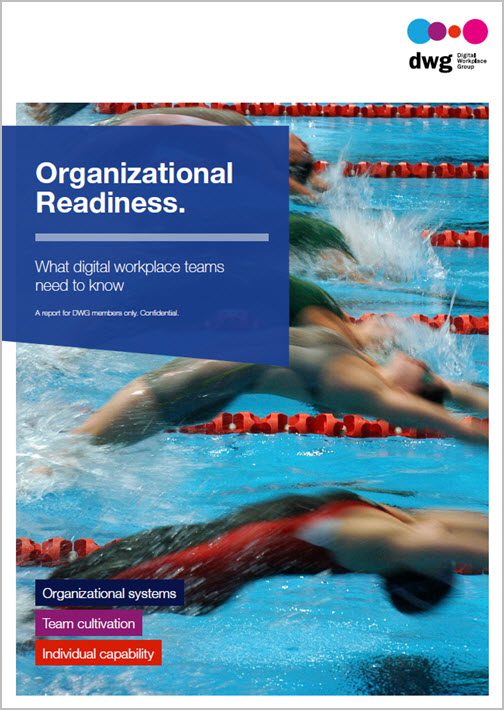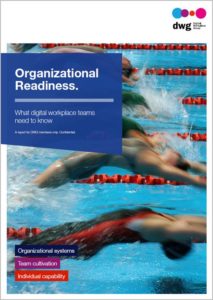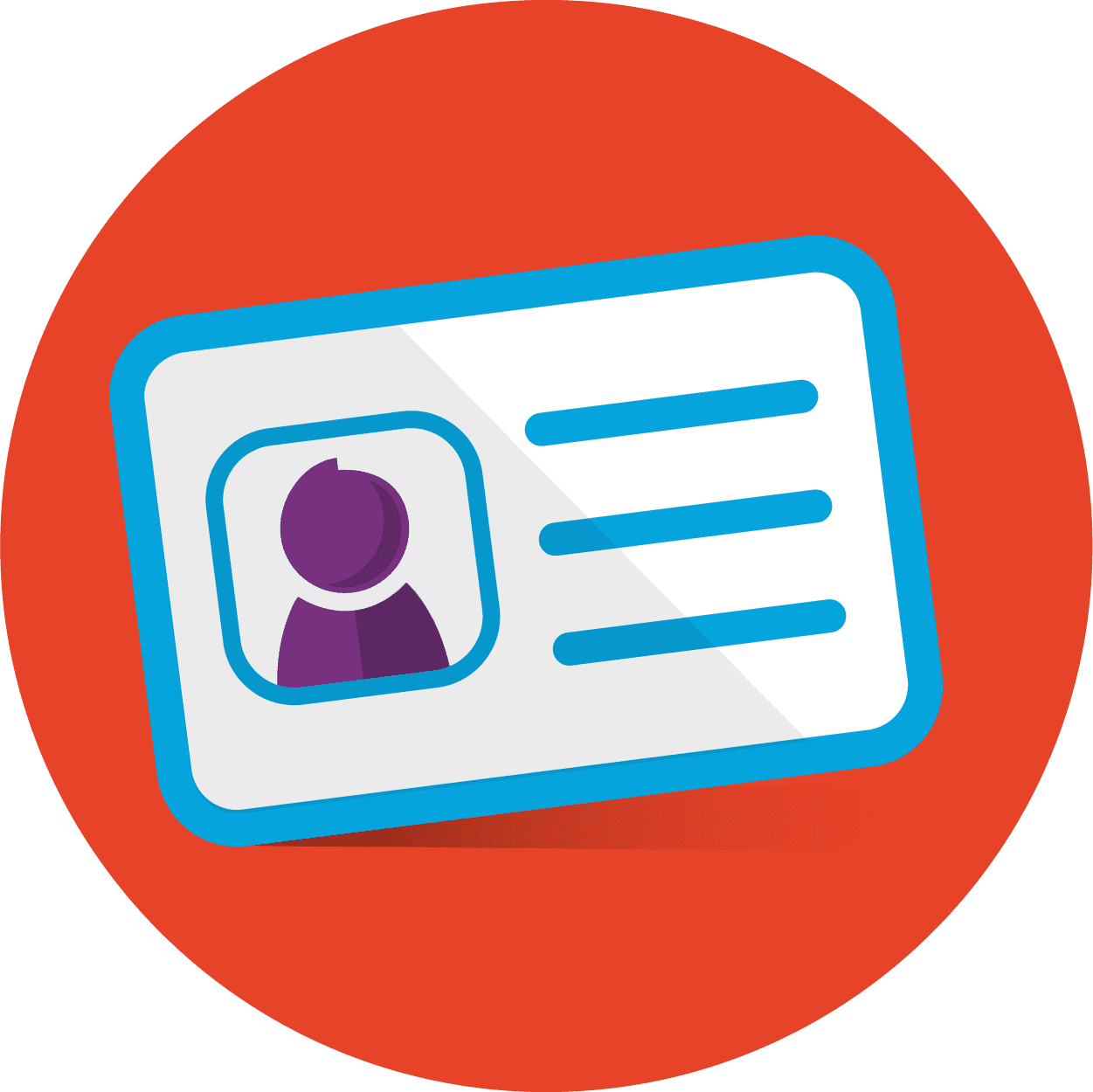Evolving the elements of organizational readiness for 2021 and beyond
It was a dissonant moment when I sat back to work out that five years have now passed since DWG’s first research report into organizational readiness was published. Dissonant, because writing the paper is so fresh in my mind. And dissonant because the world in which I wrote its sequel has transformed into something so very, very different. Time flows in unfathomable ways.
Organizational readiness in 2016…
The original piece was inspired by the fact that the ‘organizational readiness’ vertical of our Digital Workplace Maturity Benchmark was often one of the lowest performing areas for organizations. This serves as testament to how challenging the ‘people’ and ‘culture’ elements of change are for digital workplace teams. Many find themselves having to become students of human psychology and emotion, or even anthropologists who can make sense of the complex group dynamics and relationships that blend to create culture.
And so, our research explored what teams can do across four key areas, with the aim of those teams being better able to help prepare their colleagues – and themselves – for using the digital workplace effectively. We focused on ‘leadership and management’, ‘organizational culture’, ‘policies and processes’, and ‘user ability and motivation’, considering indicators of readiness within each and tactics for helping to achieve those indicators.
…and organizational readiness in 2020
Step into 2020, and (given how challenging organizational readiness has historically been) many workforces that were previously reliant on office space actually amazed themselves at how quickly they were able to get organized to continue working while geographically dispersed, rapidly shifting from shared physical and digital spaces to solely shared digital spaces. As Paul Miller wrote in the Decade of Courage Manifesto, the digital workplace for many became the essential workplace.
When we spoke to our members during the course of the year, organizational readiness for digital working seemed high in 2020; technology projects were accelerated with little friction, internal communications adapted, people found that they and their teams were able to get work done, leaders were present digitally, managers were empathetic. But as the year progressed, cracks emerged too. People missed human connection, were working longer hours, experienced ‘Zoom fatigue’ from endless online meetings and not everyone was enjoying the experience of working from home. Various divides in the experience of digital working emerged – along gender, income and age lines.
What are the elements of organizational readiness going forward?
What can we learn from this period, so that digital workplace teams focused on organizational readiness can take advantage of the gains made in the last year, fill in any gaps and refresh their approaches so as to be more regenerative over time?
DWG’s update to its research on organizational readiness evolves the original framework of four areas to a ‘nested system’ of three, focused on organizational systems, team cultivation and individual capability. All need to be considered synchronously, with each feeding into and off the other in order for the people within an organization to be ready for and effective in digital ways of working.
While the new framework takes in the 2016 elements, it also incorporates lessons from 2020 as well as DWG’s research from the past five years. This is why the importance of ‘play’ and socializing together in nurturing readiness for digital working is emphasized under ‘team cultivation’, and why under individual capability you’ll see both wellbeing and the understanding of personal and environmental factors related to the ability to focus.
The research paper thus brings together insights, resources and recommendations across a total of nine areas, listed below with thinking points for each.
Organizational systems
- Leadership and culture: How will digital workplace teams work with leadership teams to help them evolve their styles and practices to become progressively more adept at using the digital workplace to connect with distributed workforces?
- Infrastructure: What new structures need to be in place – and old structures reassessed, improved and possibly removed – to embed any positive changes and root out unsustainable practices that have emerged in the last year?
- Communications and content: How will digital workplace and communications teams take stock of how their content and communications strategies became rerouted during the pandemic, and ensure that their ongoing strategies bridge both emergent and business-as-usual needs?
Team cultivation:
- Management: Have managers of teams and people across the organization been able to adapt and evolve to become effective at supporting distributed teams?
- Working and learning together: How will teams be supported to blend both synchronous and asynchronous ways of working together as well as informal and formal learning moments into their days?
- Playing and socializing together: How can teams be supported to find different moments of human connection and ‘play’ together via the digital workplace?
Individual capability:
- Digital literacy: What are the differing levels of digital literacy that exist across the organization, and how can people be supported to gain comfort and confidence in using the digital workplace?
- Focus: To what extent is ‘ability to focus’ an intentional part of your digital workplace programme work for individuals, as a key element of an individual’s productivity?
- Wellbeing: How does the digital workplace and ways of working digitally help – and hinder – people’s wellbeing as a precursor to being able to work effectively?
DWG’s research programme for 2021 holds a mirror to our shifting times as we move into what we’ve termed ‘the living age’, taking in topics such as anthropology, learning, hybrid working and resilience alongside business intelligence and no/low code. Underpinning all of these are the lessons of organizational readiness – that we are all human and need healthy structures, relationships and habitats in place to enable us to make the best use of the tools of our trades, including the digital. We can all build on what we have created and achieved in the last year to design digital workplaces and services that support our colleagues to help them do their best work, no matter where they are and who they are with.
Related resources
 | Organizational Readiness: What digital workplace teams need to know Download the report excerpt |
Talk to us about…
… becoming a DWG member
Learn about DWG Membership
Categorised in: Research reports


